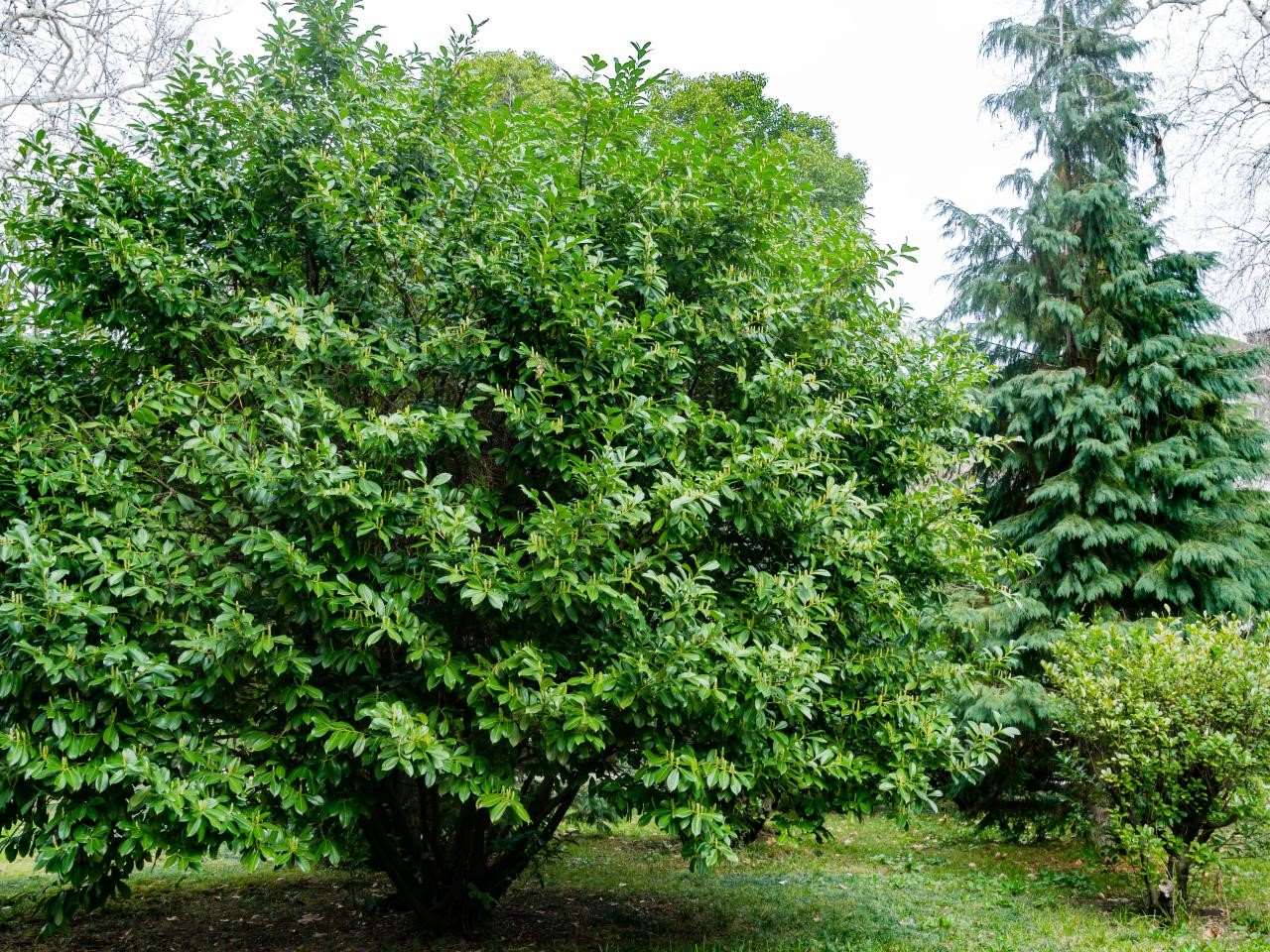
Ever wondered why cherry laurel trees are such a popular choice for gardeners and landscapers alike? Well, you're about to find out! These leafy giants are not just any ordinary trees; they're packed with fascinating traits that make them stand out in the plant kingdom. From their lush, glossy leaves to their ability to thrive in various conditions, cherry laurels have a lot to offer. But that's just scratching the surface. Cherry laurel trees are more than just pretty faces in the garden; they're also rich in history and utility. So, buckle up as we dive into the world of cherry laurels, where we'll uncover 12 amazing facts that highlight why these trees are a cut above the rest. Ready to get your green thumbs on some intriguing botanical knowledge? Let's get started!
Key Takeaways:
- Cherry laurel trees are easy to care for and make beautiful additions to gardens. They thrive in well-drained soil, attract pollinators with their fragrant flowers, and can be shaped into unique designs for added aesthetic appeal.
- While cherry laurel trees have ornamental value and can be used in culinary dishes, it's important to be cautious as their berries are toxic to humans and pets. Responsible planting and management are essential to prevent unwanted spread.
What is a Cherry Laurel Tree?
Cherry laurel trees, known scientifically as Prunus laurocerasus, are evergreen shrubs or small trees that are widely appreciated for their glossy, dark green leaves and beautiful spring flowers. Originating from regions in Southeast Europe and Southwest Asia, these plants have become popular in gardens and landscapes around the world for their aesthetic appeal and low maintenance requirements.
- Prunus laurocerasus is the botanical name for cherry laurel, which belongs to the Rosaceae family, sharing lineage with roses, cherries, and almonds.
Growth and Care
Caring for a cherry laurel tree is relatively straightforward, making it a favored choice among both novice and experienced gardeners. These trees thrive in well-drained soil, require moderate watering, and benefit from full sun to partial shade exposure.
-
Cherry laurels can grow up to 20 feet tall and 10 feet wide, though size can be controlled with regular pruning.
-
They are hardy in USDA zones 6 through 9, showcasing their adaptability to different climates.
Cherry Laurel's Ornamental Value
The ornamental value of cherry laurel trees lies in their lush foliage and the clusters of creamy-white flowers they produce in spring. These features, combined with their ability to form dense hedges, make them an excellent choice for privacy screens and decorative borders.
-
In spring, cherry laurels produce small, fragrant flowers that attract bees and other pollinators, contributing to the health of the garden ecosystem.
-
The flowers are followed by dark purple to black berries, which are attractive to birds but toxic to humans and pets if ingested.
Landscaping with Cherry Laurels
Cherry laurels are versatile in landscaping. They can be used as standalone specimens, in groups to create dense hedges, or even in containers for patio decoration. Their evergreen nature ensures year-round interest in the garden.
-
When planted in rows, cherry laurels can form a thick, impenetrable hedge, offering privacy and reducing noise pollution.
-
Their tolerance to pruning and shaping makes cherry laurels ideal for topiary art, allowing gardeners to craft unique designs.
Environmental Benefits and Considerations
Beyond their beauty, cherry laurels offer environmental benefits, such as improving air quality and providing habitat for wildlife. However, gardeners should be aware of their invasive potential in some regions.
-
Cherry laurels can help filter pollutants from the air, making them beneficial for urban and suburban landscapes.
-
In some areas, cherry laurels are considered invasive due to their rapid growth and ability to spread. Responsible planting and management are essential to prevent unwanted spread.
Cherry Laurel in Folklore and Symbolism
Cherry laurel trees hold various meanings in folklore and symbolism. In some cultures, they symbolize peace, protection, and success.
-
Historically, cherry laurels were planted around homes to ward off evil spirits, according to folklore.
-
The tree's evergreen leaves symbolize eternal life and renewal, themes that are echoed in many cultural traditions.
Culinary Uses of Cherry Laurel
While the berries of the cherry laurel are toxic, the leaves have been used in small quantities to flavor certain culinary dishes. Caution is advised, as the plant contains compounds that can be harmful if ingested in large amounts.
- Cherry laurel leaves have been used to flavor jams, jellies, and even some alcoholic beverages, imparting a unique aroma and taste.
A Final Nod to Cherry Laurel Trees
Cherry laurel trees, with their glossy green leaves and springtime blooms, offer more than just aesthetic appeal. They're a haven for wildlife, providing shelter and food, and play a crucial role in landscaping, thanks to their dense foliage and fast growth. Whether you're a gardening enthusiast or someone who appreciates nature's beauty, understanding these trees can enrich your outdoor experience. Remember, though, they require a bit of know-how to grow successfully and safely, given their toxic parts. But don't let that deter you. With the right care, cherry laurels can transform your garden into a lush, vibrant sanctuary. So, why not consider adding one to your green space? They might just be the perfect backdrop for your next outdoor gathering or a peaceful retreat for a quiet afternoon.
Frequently Asked Questions
Was this page helpful?
Our commitment to delivering trustworthy and engaging content is at the heart of what we do. Each fact on our site is contributed by real users like you, bringing a wealth of diverse insights and information. To ensure the highest standards of accuracy and reliability, our dedicated editors meticulously review each submission. This process guarantees that the facts we share are not only fascinating but also credible. Trust in our commitment to quality and authenticity as you explore and learn with us.


